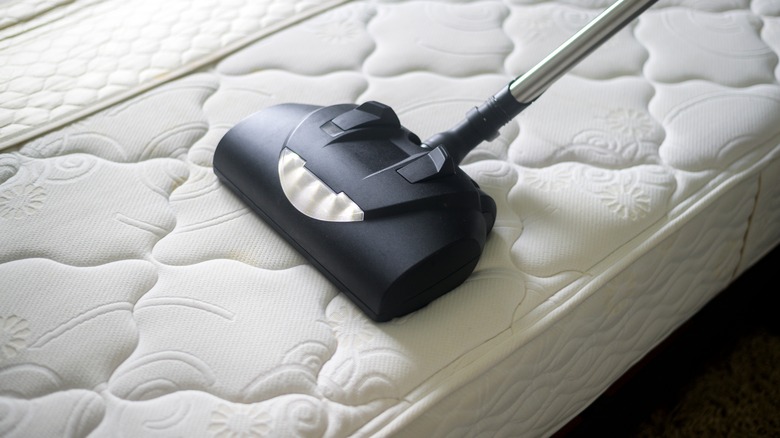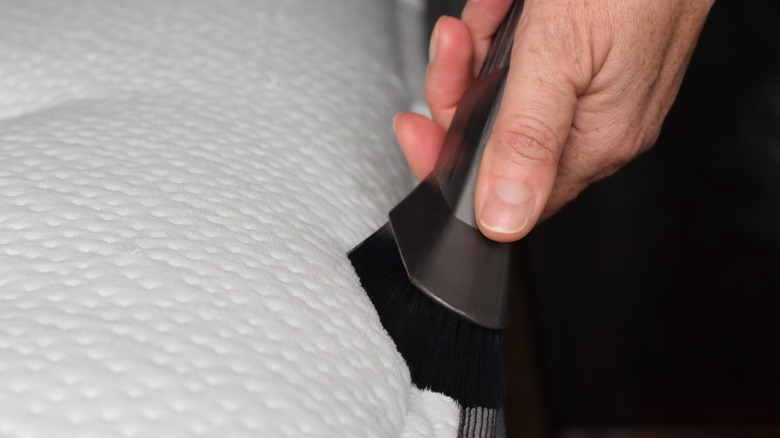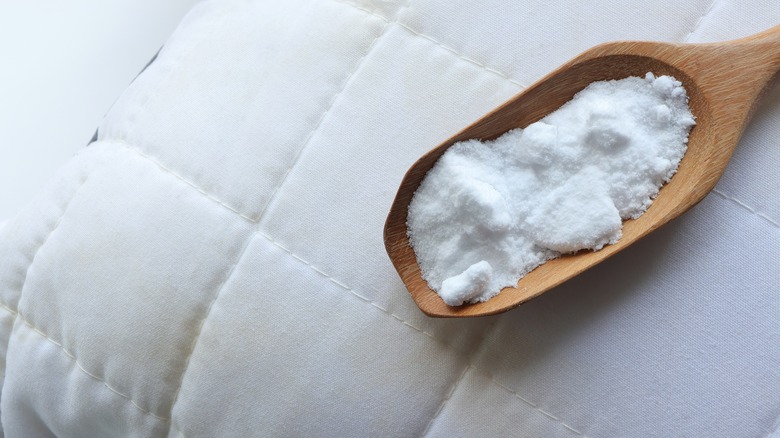Why You Should Vacuum Your Mattress Regularly And How To Do It
If you fancy yourself a good housekeeper, you probably regularly vacuum all the usual spots in the house: hallways, living room, foyer, stairs, etc. However, there's one hidden but vital space that you should be vacuuming routinely, and you sleep on it each night. That's right, your mattress is a hotbed for dust and allergens (in addition to disgusting dust mites) that can and should be cleaned regularly; so consider this your crash course in vacuuming mattresses.
Over the course of time, mattresses (like all other household surfaces) accumulate debris and need to be freshened up. Unlike other surfaces, however, you cannot see what you are vacuuming since it blends in with the mattress or is altogether hidden. Fortunately, vacuuming your mattress regularly with an upholstery attachment will help to lift much of the surface-level debris and allergens. Expert recommendations for frequency of vacuuming range from a cleaning every three to six months to much more frequently. Ultimately, you get to choose how often you deem it is fit. If someone in your home suffers severe allergies or if you prefer a spic and span home, it may be in your interest to vacuum your mattress every two weeks or so.
How to freshen your mattress with a vacuum
Hopefully, you're now convinced to vacuum your mattress with at least some degree of frequency. To get started, clean your vacuum canister or filter (this will allow you to keep track of how much dust it pulls from your mattress) and your upholstery attachment to prevent transferring new dust. Your sheets and mattress protector should already be stripped and on their way through the laundry process, so they won't be in your way. Slowly vacuum the surface of your mattress, applying a firm but gentle amount of pressure to the attachment. This approach will allow the vacuum to suck up not only the surface-level dust but also some of the debris that you cannot see.
If your mattress has folds, pleats, or special detailing (such as is common in pillow-top mattresses), you can utilize the crevice tool to get in difficult-to-reach spots. Once you have completed these steps, you should be able to see a small amount of dust swirling around in your vacuum's canister, but if you think there's more surface dust lingering, you can repeat the process on high-power mode. The final step is to remake your bed with a freshly washed mattress protector and sheets, and sleep easy on its now-cleaner surface.
Methods for getting the most out of your mattress cleaning
While the aforementioned approach to mattress vacuuming will keep it generally fresh, there are harder-hitting methods to elevate the cleanliness you achieve. One of the best and easiest approaches is to pair your vacuuming session with baking soda. This humble powder is a powerhouse when it comes to neutralizing odors, as well as lifting small stains, and helping to dry out the moisture that it traps from sweat every night. To get started, simply shake a generous amount of baking soda onto your mattress after stripping the sheets and mattress protector. Leave it to soak in and do its magic for at least 30 minutes. Once the waiting has ended, vacuum the mattress thoroughly to remove the powder as well as all of the debris it has lifted. You may need to make several passes with the vacuum in order to remove all of the powder. Remember to make good use of that crevice tool unless you want to risk gritty baking soda getting left behind.
You can add another level of freshness to your mattress with essential oils. Add 10 or more drops of your favorite aroma to the baking soda prior to sprinkling it over your mattress and you'll be rewarded with a bright and clean sleeping surface when all is said and done. While vacuuming your mattress might not be common housekeeping knowledge, implementing this habit can lead to a fresher sleeping environment.


